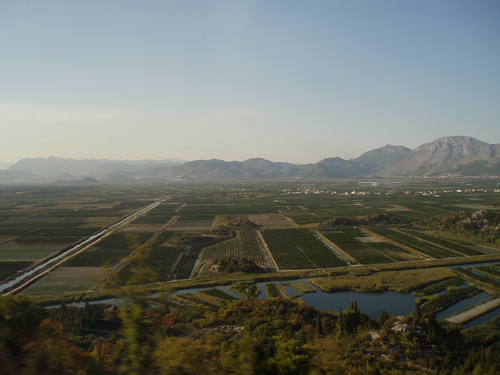世界經濟論壇目前正在瑞士達沃斯舉行。聯合國環境規劃署UNEP在論壇上發表報告警告,表示為了供給全球成長的人口,越來越多草原和林地等自然土地資源已變成農地。如果自然土地轉為農地的趨勢持續,到了2050年,土地退化面積將約等同於巴西的國土面積。
這份報告名為「全球土地利用評估報告:在消費與永續供給間取得平衡」,由UNEP主持,27位國際知名資源科學家、33個國家政府和其他團體組成的國際資源小組製作。
自然生態轉為作物用地 持續擴張中
UNEP執行主任Achim Steiner說,「國際資源小組的研究顯示,過去數十年來,全球土地生態系統服務和功能以空前的速度減少。森林和溼地以非永續的方式逐漸轉變為農業用地,以餵養成長的人口。」
目前農業佔用了全球超過30%的土地,作物用地佔了全球10%的土地。1969至2007年間,作物用地擴張了11%,現在仍持續擴張中。如果此擴張趨勢持續,到了2050年,作物用地將會擴張達1億2千萬至5億公頃。
肉類飲食、生質燃料需求增加是主因
研究發現,主要的原因是開發中國家逐漸轉為富含蛋白質的飲食習慣,且已開發國家的生質燃料和生質材料需求升高,均導致了土地需求增加。
「土地資源有限,生產、供應和消費土地產品時必須更有效率。我們必須找出2050年前省下這數百萬公頃土地的方法,並且確實執行。」Steiner說。
離「安全生存空間」還剩16億4千萬公頃
國際資源小組以人類「安全生存空間」的概念為起點,探討在不造成生物多樣性流失、二氧化碳排放、水循環、營養循環破壞和土壤養分流失等不可逆損害的情況下,人類還有多少土地空間可以利用。
國際資源小組計算出全球作物用地面積最多還可增加16億4千萬公頃。但小組也警告,如果作物用地持續依此速度擴張,到了2050年將會超過這個數字。
報告聚焦在食物、燃料和纖維等土地產品,說明如何評估一個國家的消費水準是否超越其永續供給的能力,並條列出以下平衡消費與永續生產的條件和選項:
- 改善土地管理和土地利用計畫,盡量不要將肥沃土壤當成建設用地
- 投資恢復已退化土地
- 以顧及生態和社會需求的方式改善農業生產實務
- 監控世界各國的土地利用條件和農產品的整體消耗
- 減少食物浪費,增加蔬食比例
- 減少燃料作物的補貼,包括減少和淘汰生質燃料消耗國的生質燃料配額
Lands covering an area the size of Brazil could be degraded by 2050 if conversion of natural lands to crop lands continues, warns a report by the UN Environment Programme, presented at the ongoing World Economic Conference in Davos.
The report, “Assessing Global Land Use: Balancing Consumption with Sustainable Supply,” was produced by the International Resource Panel, a consortium of 27 internationally renowned resource scientists, 33 national governments and other groups, hosted by UNEP.
UNEP Executive Director Achim Steiner said, “The findings of the International Resource Panel show that the world has witnessed an unprecedented sharp decline in terrestrial ecosystem services and functions during the past decades. Forests and wetlands have been converted to agricultural land to feed growing populations but at a cost that is not sustainable.”
Shifts to more protein-rich diets in developing countries and a growing demand for biofuels and biomaterials, especially in developed countries, are increasing the demand for land, the report finds.
“Recognizing that land is a finite resource, we need to become more efficient in the ways we produce, supply and consume our land-based products. We must be able to define and adhere to the boundaries within which the world can safely operate to save millions of hectares by 2050,” said Steiner.
The need to feed the world’s growing population has led to more land being converted to cropland at the expense of savannah, grassland and forests.
Agriculture currently consumes more than 30 percent of the world’s land area, and cropland covers around 10 percent of all land on Earth. Between 1961 and 2007, cropland expanded by 11 percent, a trend that continues to grow.
Under a business-as-usual scenario, the net expansion of cropland will range from 120 to 500 million hectares by 2050.
The International Resource Panel uses the concept of “Safe Operating Space” as a starting point to understand how much more land use can occur before the risk of irreversible damage – through biodiversity loss, release of carbon dioxide, disruption of water and nutrient cycles and loss of fertile soil – becomes unacceptable.
It calculates that the global cropland area available for supplying demand could safely increase by up to 1,640 million hectares.
But warns that under business-as-usual conditions the expected global land demands by 2050 will overshoot this safe operating space.
The report outlines the need and options to balance consumption with sustainable production. It focuses on land-based products, such as food, fuel and fiber, and describes methods to enable countries to determine whether their consumption levels exceed sustainable supply capacities.
The report calls for:
- Improved land management and land use planning to minimize the expansion of build-up land on fertile soils;
- Investment in the restoration of degraded land;
- Improved agricultural production practices to increase intensification in an ecologically and socially acceptable way;
- Monitoring global land use requirements of countries for the total consumption of agricultural goods;
- Reduction of food waste and shift towards more vegetable diets;
- Reduction the subsidization of fuel crops, including the reduction and phase out of biofuel quotas in consuming countries.
※ 全文及圖片詳見:ENS





